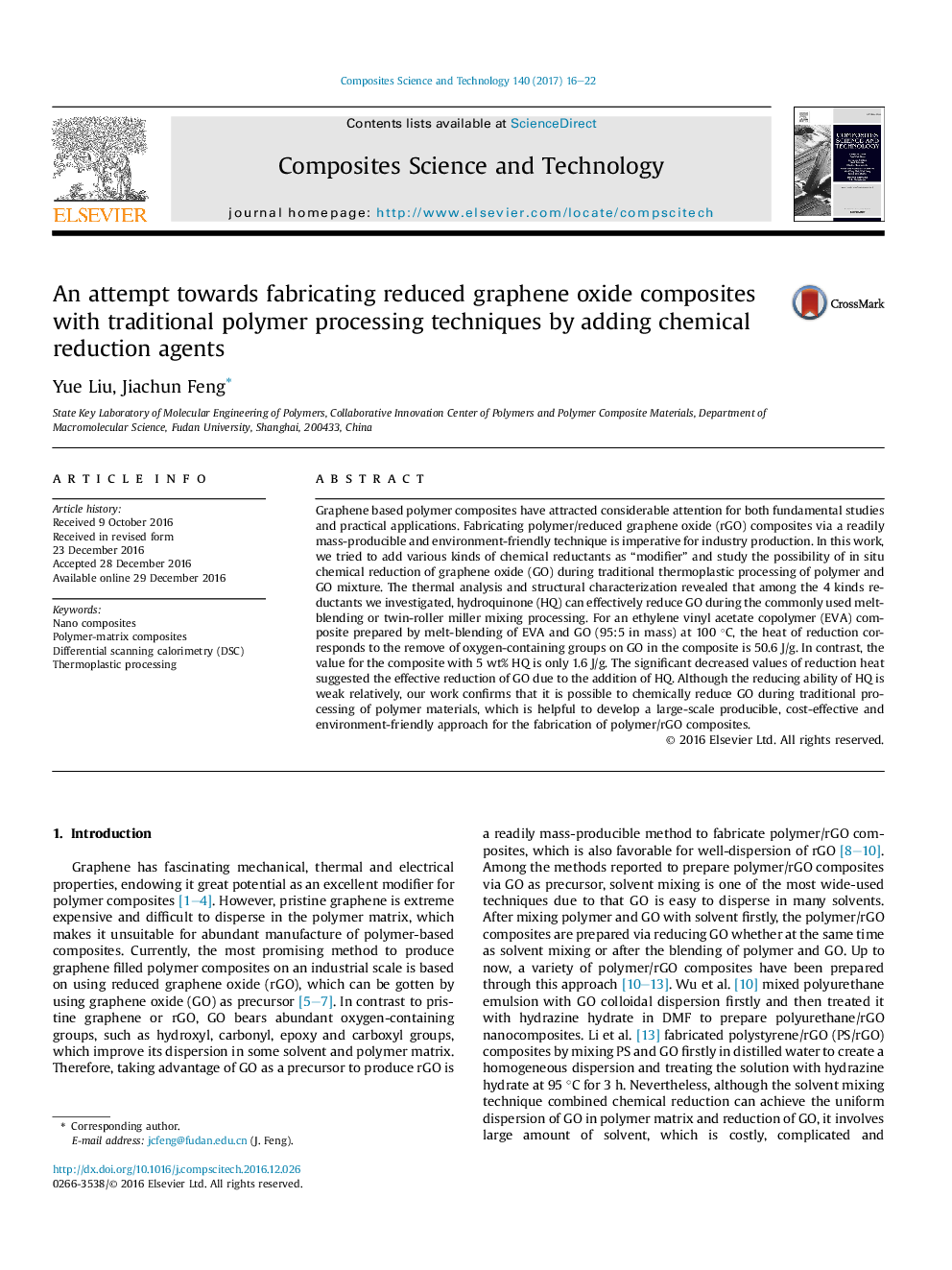| Article ID | Journal | Published Year | Pages | File Type |
|---|---|---|---|---|
| 5022070 | Composites Science and Technology | 2017 | 7 Pages |
Abstract
Graphene based polymer composites have attracted considerable attention for both fundamental studies and practical applications. Fabricating polymer/reduced graphene oxide (rGO) composites via a readily mass-producible and environment-friendly technique is imperative for industry production. In this work, we tried to add various kinds of chemical reductants as “modifier” and study the possibility of in situ chemical reduction of graphene oxide (GO) during traditional thermoplastic processing of polymer and GO mixture. The thermal analysis and structural characterization revealed that among the 4 kinds reductants we investigated, hydroquinone (HQ) can effectively reduce GO during the commonly used melt-blending or twin-roller miller mixing processing. For an ethylene vinyl acetate copolymer (EVA) composite prepared by melt-blending of EVA and GO (95:5 in mass) at 100 °C, the heat of reduction corresponds to the remove of oxygen-containing groups on GO in the composite is 50.6 J/g. In contrast, the value for the composite with 5 wt% HQ is only 1.6 J/g. The significant decreased values of reduction heat suggested the effective reduction of GO due to the addition of HQ. Although the reducing ability of HQ is weak relatively, our work confirms that it is possible to chemically reduce GO during traditional processing of polymer materials, which is helpful to develop a large-scale producible, cost-effective and environment-friendly approach for the fabrication of polymer/rGO composites.
Keywords
Related Topics
Physical Sciences and Engineering
Engineering
Engineering (General)
Authors
Yue Liu, Jiachun Feng,
